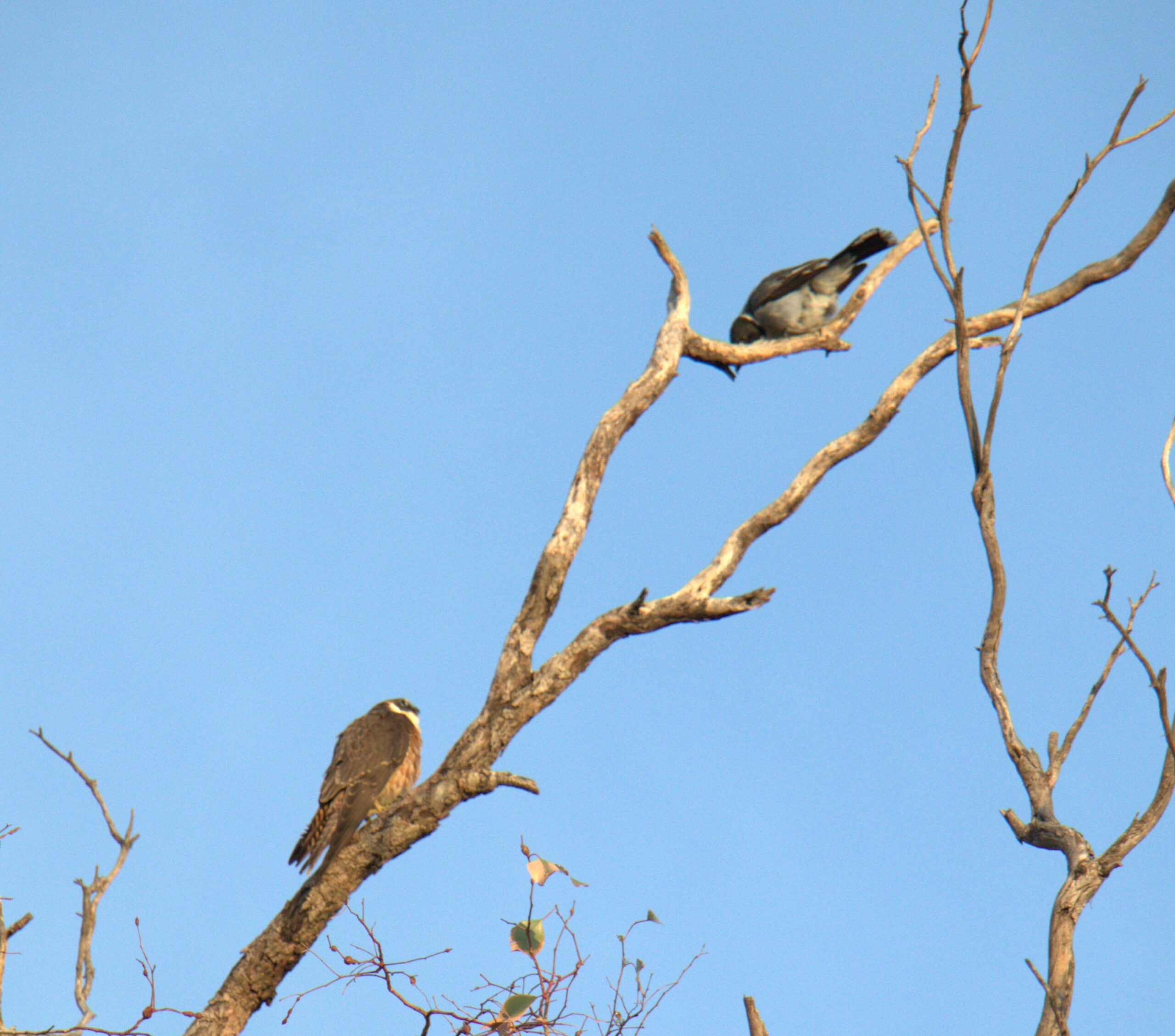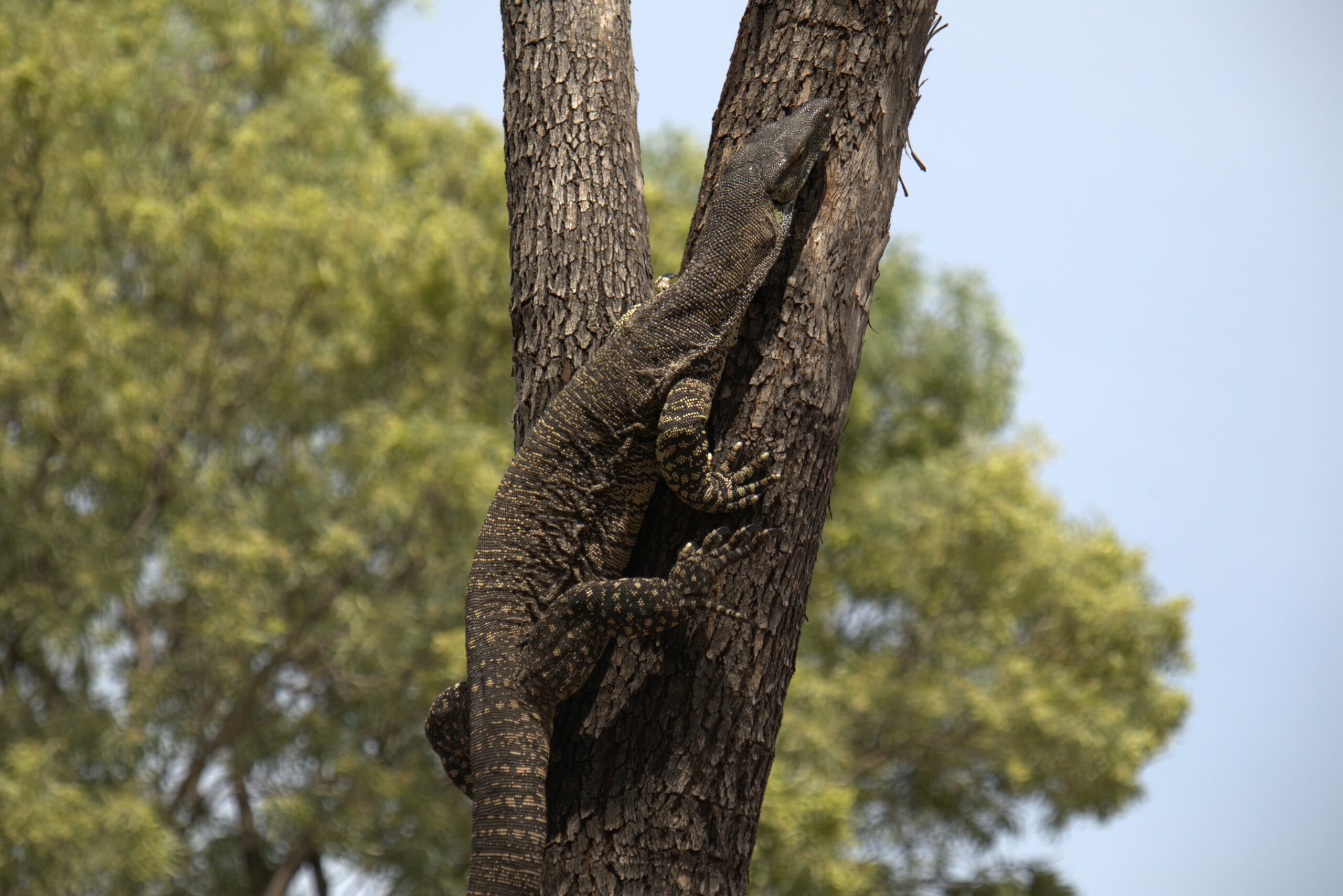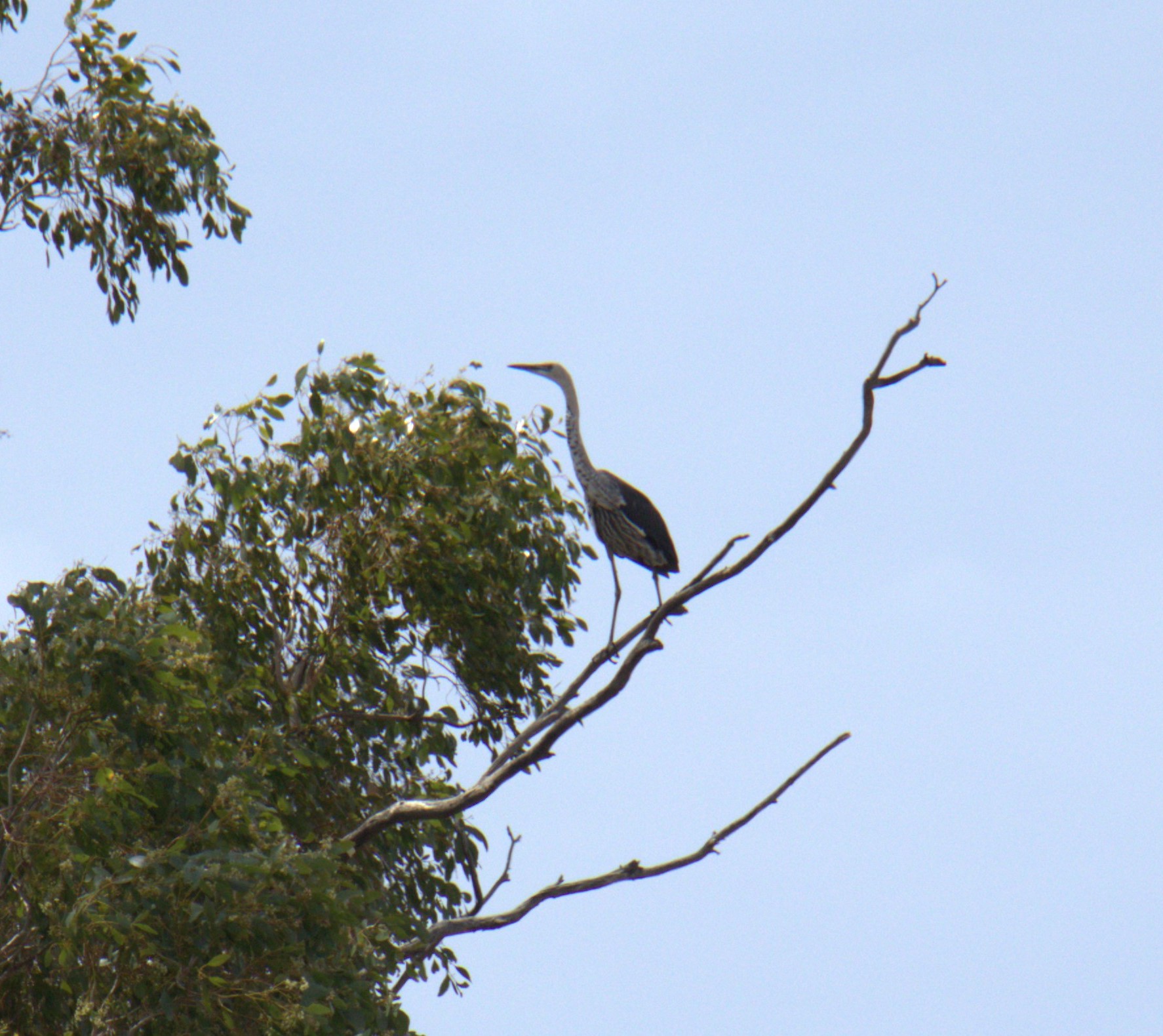Traditional Gamilaaraay Language of the Gomeroi nation used in this article (H. White & B. Duncan – Speaking Our Way, M. Mckemey).
The Commonwealth Environmental Water Holder’s (CEWH) Science Program funds the Flow Monitoring, Evaluation and Research (Flow–MER).
Written by Jeremy Shrubb.

The Flow-MER program is the main way the Commonwealth Environmental Water Holder monitors and evaluates the delivery of water for the environment. One of the ways this is evaluated is studying how the delivery of water for the environment improves or maintinains the diversity of gunambaay (waterbirds) at selected areas in the Murray-Darling Basin. The Guwayda Warrambools (Gwydir Wetlands) are one of these Selected Areas.
Jeremy Shrubb works as an environmental consultant for 2rog Consulting. In November 2023, Jeremy travelled to the Guwayda Warrambools for his first gunambaay survey (Figure 1).
It was quite balal (dry) at the Guwayda Warrambools and gunambaay numbers were low. However, there was still plenty of other wildlife and the occasional gunambaay.




Managing water for the environment is a collective and collaborative effort, working in partnership with communities, private landholders, scientists and government agencies – these contributions are gratefully acknowledged.
We acknowledge the Traditional Owners of the land on which we live, work and play. We also pay our respects to Elders past, present and emerging.


